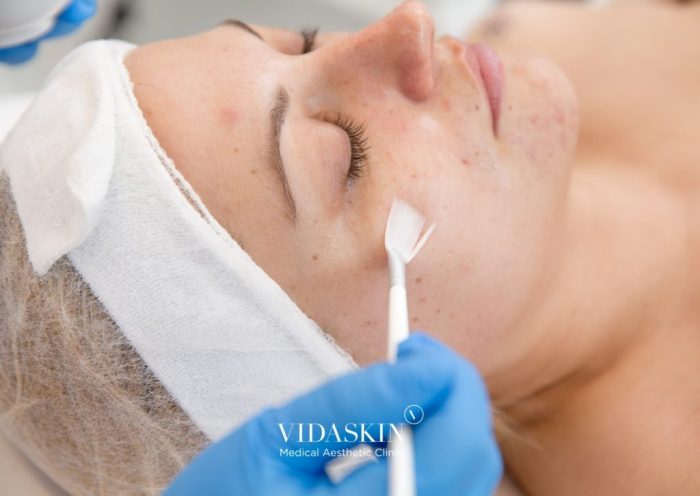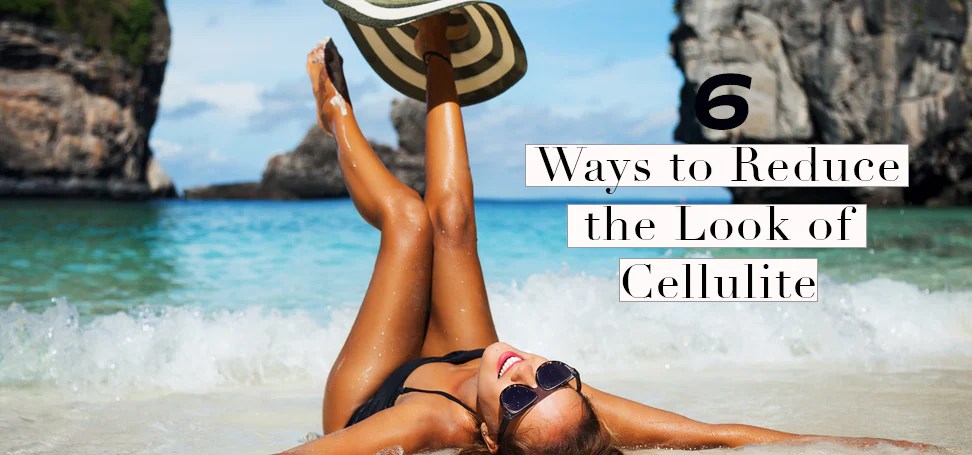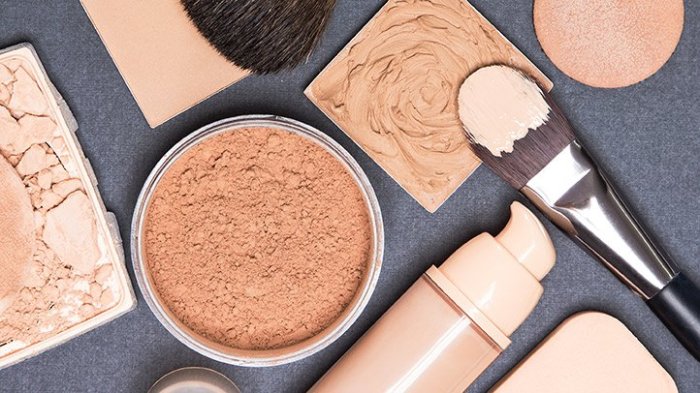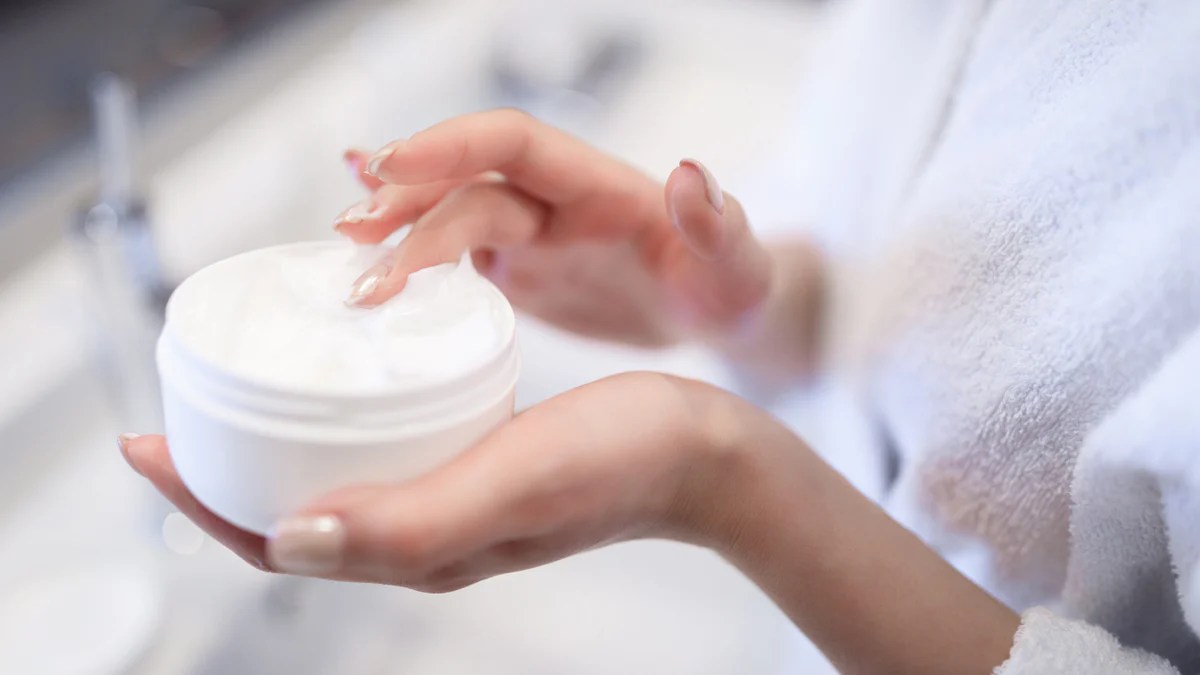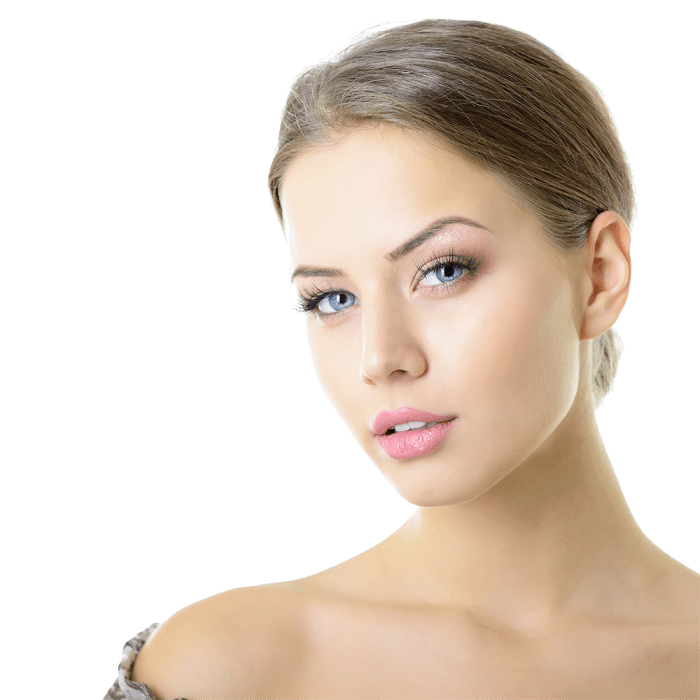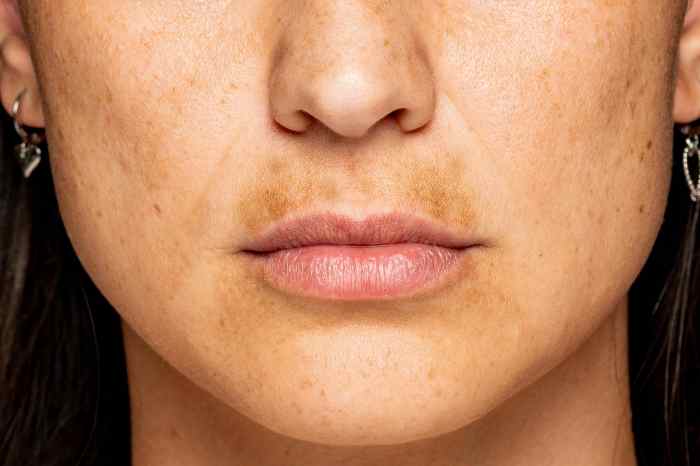What is acne surgery? This exploration delves into the world of surgical interventions for acne scars, differentiating it from other acne treatments. We’ll examine the various types of acne requiring surgical intervention, the different surgical procedures used, and the meticulous pre- and post-operative care necessary for successful outcomes. From excision to dermabrasion, we’ll compare techniques, highlighting their respective advantages and disadvantages, and examine the potential complications.
Understanding the intricacies of acne surgery involves considering patient suitability, potential risks and benefits, and alternative treatments. The cost and insurance coverage aspects will be thoroughly examined, as well as success stories, case studies, and the recovery timelines for different procedures. We’ll conclude with a comprehensive overview, leaving you well-informed about this specialized area of dermatological care.
Introduction to Acne Surgery
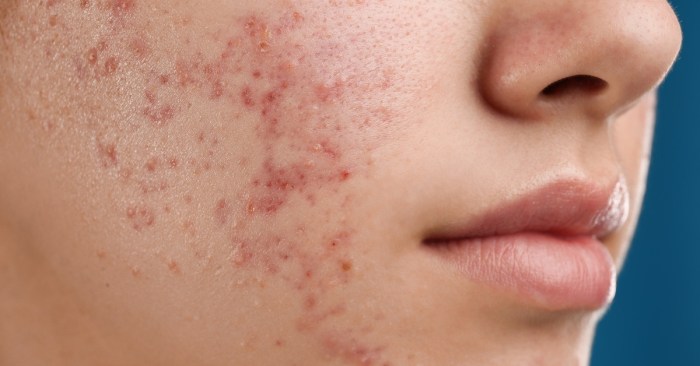
Acne surgery represents a specialized approach to treating severe acne and its lingering consequences, distinct from topical treatments, oral medications, or laser therapies. It’s a more invasive procedure, often reserved for cases where other methods have proven ineffective or have caused unacceptable side effects. This surgical intervention focuses on the removal of acne lesions, scars, and other problematic skin formations.Acne surgery addresses specific skin issues that other treatments might not fully resolve.
It’s particularly valuable for managing deep, cystic acne, severe nodular acne, and acne scars that have resisted standard therapies. The surgical approach targets the root cause of the problem, aiming to restore the skin’s normal structure and appearance.
Types of Acne Requiring Surgery
Acne presents in various forms, with some cases necessitating surgical intervention. Severe cystic acne, characterized by large, pus-filled lesions, often leads to significant inflammation and scarring. Nodular acne, marked by painful, inflamed bumps beneath the skin’s surface, also may benefit from surgical treatment to minimize long-term damage. Persistent, recalcitrant acne that doesn’t respond to other treatments might warrant surgical exploration.
Finally, extensive acne scarring, resulting from previous inflammatory lesions, is a common reason for considering surgical interventions.
Surgical Procedures for Acne Scars
Surgical techniques for acne scars aim to improve skin texture and appearance. Different approaches address various scar types and severities. These techniques vary significantly in their invasiveness, recovery time, and potential for complications.
Comparison of Surgical Techniques for Acne Scars
| Technique | Description | Pros | Cons |
|---|---|---|---|
| Excision | This procedure involves surgically removing the scar tissue. The surgeon carefully cuts out the affected area, often followed by skin grafting to restore the area’s appearance and functionality. | Effective for deep, raised scars; potentially restores skin texture. | More invasive; longer recovery period; potential for scarring; increased risk of infection. |
| Dermabrasion | Dermabrasion uses a rotating instrument to abrade the skin’s surface, removing the top layer of damaged skin. This procedure aims to smooth out irregularities and promote new skin cell growth. | Can improve the appearance of mild to moderate acne scars; relatively less invasive than excision. | Higher risk of temporary skin discoloration; potential for prolonged redness; possible complications such as infection or hyperpigmentation. |
| Laser resurfacing | Laser resurfacing uses precisely controlled beams of light to target and vaporize or ablate skin tissue. This procedure can remove superficial scars and improve skin texture. | Minimally invasive; faster recovery time than other surgical options; effective for various scar types; often less painful than dermabrasion. | Potential for skin discoloration, blistering, or infection; possible scarring if not performed correctly; may not be suitable for all types of acne scars. |
| Chemical peels | Chemical peels use strong acids to remove the top layers of skin, promoting new skin cell growth. The depth of the peel is adjusted to target specific skin concerns, including acne scars. | Relatively non-invasive; effective for mild to moderate acne scars; often less expensive than other surgical techniques. | Potential for skin irritation, redness, or discomfort; may not be suitable for deep or severe acne scars; recovery time can vary. |
Surgical Procedures
Acne scar revision surgery offers a targeted approach to improving the appearance of acne scars, addressing a wide range of scar types and severities. These procedures aim to reshape the skin, reduce the prominence of scars, and restore a smoother, more even skin texture. The specific surgical technique employed depends on the type and depth of the scars, as well as the patient’s individual needs and expectations.
Common Acne Scar Revision Procedures
Different surgical techniques target various types of acne scars. A common procedure involves excision, where the scar tissue is removed and the surrounding skin is reshaped. Other techniques, such as skin grafting, may be employed to replace damaged skin with healthy skin from another area of the body. The choice of procedure depends on the type and extent of the scarring, and a consultation with a qualified dermatologist or plastic surgeon is crucial to determine the most appropriate treatment plan.
Acne surgery, a procedure to treat severe acne, often involves removing damaged skin. While different from the topical treatments many people use, it’s important to understand the various approaches to managing skin conditions like eczema, as seen in biologics for eczema mechanisms options considerations. Ultimately, acne surgery is a specialized treatment option for persistent and problematic acne.
Steps Involved in a Common Acne Scar Revision Surgery
The steps in a common acne scar revision surgery typically include:
- Pre-operative Evaluation: A thorough examination of the scars, including their type, depth, and distribution, is conducted. This evaluation helps determine the best surgical approach and to assess the patient’s overall health and suitability for the procedure. The dermatologist or plastic surgeon will also discuss the patient’s expectations and desired outcomes.
- Anesthesia: Local or general anesthesia is administered to ensure patient comfort and relaxation during the surgical procedure.
- Surgical Incisions: Precise incisions are made around the scar tissue to be corrected. The depth and shape of the incisions will depend on the specific type of scar.
- Scar Tissue Removal: The scar tissue is carefully excised and removed.
- Tissue Reshaping: The surrounding skin is reshaped to reduce the prominence of the scar and create a smoother appearance. This may involve techniques like skin grafting or tissue flaps.
- Closure: The surgical site is carefully closed using sutures or staples.
- Post-operative Care: The patient is provided with detailed instructions for post-operative care, including wound care, medication management, and activity restrictions.
Pre-operative and Post-operative Care Procedures
Strict adherence to pre-operative and post-operative care instructions is crucial for optimal healing and minimizing complications. Pre-operative care often involves blood tests, consultations with an anesthesiologist, and cessation of certain medications. Post-operative care includes meticulous wound care, pain management, and strict adherence to prescribed medication regimens. Failure to follow these guidelines can significantly increase the risk of infection, delayed healing, and other complications.
Recovery Time and Potential Complications
Recovery time varies depending on the complexity of the procedure and the individual patient’s healing capacity. Simple procedures might take a few weeks to heal, while more complex procedures could require several months. Potential complications include infection, excessive scarring, bleeding, and nerve damage. Individual experiences can vary greatly.
Comparison of Recovery Periods for Different Acne Scar Surgeries
The recovery period for different acne scar surgeries varies significantly. Procedures that involve minimal tissue manipulation and smaller incisions generally have a shorter recovery time than those that involve extensive tissue reshaping or skin grafting. Factors like the patient’s age, overall health, and the individual healing response also influence the recovery duration.
Acne surgery, often a last resort, involves procedures like laser treatments or chemical peels to target stubborn blemishes. Considering how and when to start birth control can be a factor in some cases, as hormonal changes can sometimes influence acne. The right approach to birth control, as detailed in this helpful guide how and when to start birth control , could potentially help manage acne alongside other treatment options.
Ultimately, the best course of action for acne surgery depends on the individual’s specific needs and the severity of their condition.
Potential Complications of Different Procedures
| Procedure | Potential Complications | Frequency | Mitigation |
|---|---|---|---|
| Excision | Infection, excessive scarring, bleeding, nerve damage | Low to moderate | Careful surgical technique, meticulous post-operative care, antibiotic use |
| Skin Grafting | Rejection of graft, infection, prolonged healing, hypertrophic scarring | Moderate | Proper graft selection, meticulous wound care, immunosuppressants (in some cases) |
| Laser resurfacing | Infection, scarring, uneven skin tone, skin discoloration | Low to moderate | Proper laser settings, post-operative care, follow-up visits |
Candidates for Acne Surgery: What Is Acne Surgery

Acne surgery, while effective for certain cases, isn’t a one-size-fits-all solution. Identifying the right candidates is crucial for achieving positive outcomes and avoiding unnecessary procedures. Understanding the characteristics of suitable patients and those who aren’t ideal is paramount for ensuring the best possible results.Careful evaluation of a patient’s acne history, type of lesions, and overall skin health is essential before recommending acne surgery.
This evaluation will help determine if the benefits outweigh the potential risks and if the patient is likely to achieve a satisfactory outcome.
Patient Characteristics Suitable for Acne Surgery
Careful patient selection is critical for successful acne surgery. Suitable candidates typically exhibit specific characteristics related to their acne and skin type. These patients have a well-defined pattern of acne lesions, often with significant scarring or cystic acne that hasn’t responded well to other treatments.
- History of persistent acne: Patients with a history of moderate to severe acne that has not responded to conventional treatments, such as topical medications, oral antibiotics, or oral contraceptives, are often good candidates for acne surgery.
- Specific lesion type: Surgery is often targeted at specific lesions like deep, inflamed nodules or cysts. The presence of these lesions, which are often resistant to other treatments, suggests a potential benefit from surgical intervention.
- Extent of scarring: Patients with significant acne scarring, including hypertrophic or keloid scars, or those with pitted or depressed scars, might be ideal candidates for acne scar revision surgery. The extent of scarring is often a significant factor in determining the appropriateness of surgery.
- Realistic expectations: Patients who have realistic expectations about the procedure’s limitations and potential outcomes are more likely to have a positive experience. They understand that surgery may not completely eliminate all acne-related problems but can improve their condition.
Patient Characteristics Unsuitable for Acne Surgery
Certain patient characteristics might make them unsuitable for acne surgery. These factors often indicate that other treatment options might be more appropriate or that the risks of the procedure outweigh the potential benefits.
- Active, untreated infections: Patients with active infections in the area of concern are not suitable for acne surgery until the infection is controlled. Surgical intervention on infected tissue can worsen the situation.
- Poor skin healing: Patients with a history of poor wound healing or those with underlying skin conditions that may interfere with healing are less suitable for surgery. Factors like diabetes or autoimmune diseases can negatively impact wound healing.
- Unrealistic expectations: Patients who have unrealistic expectations about the procedure’s results, or those who are not compliant with post-operative instructions, are often not ideal candidates. Understanding the limitations of surgery and commitment to post-operative care are crucial.
- Certain skin types: Patients with very sensitive or thin skin might experience complications from acne surgery. This is particularly true for certain procedures, such as deep excisions.
Role of Consultation in Assessing Suitability
A comprehensive consultation plays a vital role in evaluating a patient’s suitability for acne surgery. During this consultation, the dermatologist or surgeon thoroughly assesses the patient’s medical history, current condition, and expectations.
- Detailed medical history: The consultation includes a thorough review of the patient’s medical history, including any pre-existing skin conditions, allergies, or medications. This helps identify potential complications or contraindications.
- Examination of the acne lesions: A detailed examination of the acne lesions is performed to assess the type, depth, and extent of the acne and associated scarring. This helps determine the appropriate surgical approach.
- Discussion of expectations: The surgeon discusses the potential benefits and risks of the procedure, including the limitations of acne surgery. Realistic expectations and informed consent are essential for a successful outcome.
Checklist for Evaluating Patient Suitability for Acne Scar Revision Surgery
A structured checklist helps in systematically evaluating a patient’s suitability for acne scar revision surgery.
Acne surgery, a procedure for severe acne, often involves extracting lesions and repairing damaged skin. While researching the best approach for my own skin, I stumbled upon some interesting information about dietary choices and their potential impact on skin health. For example, if you’re wondering whether tomatoes are a good or bad idea when dealing with gout, checking out this resource on are tomatoes bad for gout might be helpful.
Ultimately, understanding the root causes of acne and finding the right treatment is key to achieving healthy skin.
| Criteria | Evaluation |
|---|---|
| Medical history (allergies, medications, pre-existing conditions) | Document and assess potential risks |
| Type and extent of acne scars | Evaluate severity and location |
| Patient expectations | Assess realistic outcomes and understand the limitations of surgery |
| Skin type and healing capacity | Assess potential complications |
| Compliance with post-operative instructions | Assess patient’s willingness to follow post-op care |
Risks and Benefits
Acne surgery, while often effective, carries inherent risks. Understanding these potential downsides alongside the possible benefits is crucial for informed decision-making. This section will detail the risks and benefits associated with different surgical procedures, providing a balanced perspective for patients considering this option.
Potential Risks of Acne Surgery
A thorough evaluation of the potential risks is essential before proceeding with acne surgery. These risks vary depending on the specific procedure and the individual patient’s health status.
- Infection: Surgical procedures, no matter how precise, create small breaches in the skin, making the area vulnerable to bacterial infections. Prompt and appropriate antibiotic treatment is crucial in mitigating this risk. Proper wound care and post-operative hygiene significantly reduce the risk of infection.
- Scarring: While modern techniques minimize scarring, some degree of scarring is possible, particularly with more aggressive procedures. The type and severity of scarring can vary depending on the individual’s skin type and the extent of the surgical intervention.
- Bleeding: Any surgical procedure carries a risk of bleeding. Appropriate surgical techniques, careful hemostasis, and post-operative pressure dressings are employed to control bleeding and promote healing.
- Numbness: Some surgical procedures may result in temporary or permanent numbness in the treated area. The extent and duration of numbness depend on the specific nerves involved in the procedure.
- Adverse Reactions to Anesthesia: The use of anesthesia always carries a small risk of adverse reactions. Pre-operative assessments and careful monitoring during the procedure are essential to mitigate these risks. Reactions may range from mild discomfort to serious complications.
- Delayed Healing: Certain medical conditions or factors like poor nutrition can influence the healing process. Careful management of pre-operative and post-operative care is crucial to minimize delays in healing.
Potential Benefits of Acne Surgery
Acne surgery offers a potential pathway to improved appearance and self-esteem. The benefits are often substantial for individuals with severe acne that hasn’t responded to other treatments.
- Improved Appearance: Surgical techniques can effectively remove acne lesions and scars, leading to a noticeable improvement in skin texture and appearance. This can significantly boost a patient’s self-confidence.
- Reduced Acne: In cases of severe cystic acne, surgical interventions can effectively target and remove the lesions, thus reducing the frequency and severity of future outbreaks. This can provide long-term relief for those with persistent and debilitating acne.
- Scar Reduction: Certain surgical techniques can address and improve the appearance of existing acne scars. This helps patients achieve a more even skin tone and a smoother texture.
Comparison of Surgical Procedures
Different acne surgical procedures offer varying approaches and results. Factors such as the severity of acne, the patient’s skin type, and the surgeon’s expertise all play a role in determining the most appropriate procedure.
| Procedure | Description | Potential Benefits | Potential Risks |
|---|---|---|---|
| Dermabrasion | Removes the top layer of skin to smooth out irregularities. | Effective for superficial scars. | Increased risk of scarring, infection, and prolonged healing time. |
| Laser resurfacing | Uses laser energy to target acne lesions and scars. | Can reduce inflammation and improve skin tone. | Potential for scarring, hyperpigmentation, and discomfort. |
| Surgical excision | Removes cysts and nodules under the skin. | Effective for deep acne lesions. | Higher risk of scarring and bleeding. |
Success Stories and Testimonials
Patients have reported varying degrees of success with acne surgery. The positive impact on self-image and confidence is often cited as a key benefit. A patient who had extensive cystic acne, for example, saw a significant reduction in acne lesions and scar tissue after undergoing a series of surgical procedures. Another patient experienced a noticeable improvement in skin texture and tone following laser resurfacing, leading to an enhanced sense of well-being.
Cost and Insurance Coverage
Acne surgery, while effective, can be a significant financial investment. Understanding the potential costs and how insurance might cover these procedures is crucial for patients considering this option. This section will detail the average costs of various acne surgery procedures, explore insurance coverage, and discuss the overall financial implications of pursuing this type of treatment.The cost of acne surgery varies considerably based on the specific procedure, the extent of the treatment needed, the location of the clinic, and the surgeon’s expertise.
Factors such as the use of advanced technologies, the complexity of the scar revision, and the number of sessions required all play a role in determining the overall price tag.
Average Costs of Acne Surgery Procedures
Acne surgery procedures can involve a range of costs, from relatively low-cost treatments to more extensive and costly options. For example, a simple excision of acne lesions might range from $500 to $1500 per session, whereas a more involved procedure such as laser resurfacing or chemical peels for acne scar revision might cost $1000 to $5000 or more, depending on the extent of the treatment.
It’s essential to discuss pricing with a qualified dermatologist or plastic surgeon to obtain personalized estimates.
Insurance Coverage for Acne Surgery
Insurance coverage for acne surgery is not always straightforward. Insurance companies often consider acne surgery a cosmetic procedure, and therefore, coverage is usually limited or nonexistent. Even if a portion of the procedure is deemed medically necessary, for example, to treat severe acne scars, the extent of coverage can vary greatly depending on the specific policy.
Examples of Insurance Policies and Acne Scar Revision
Different insurance policies have varying levels of coverage for acne scar revision. A comprehensive health plan might cover a portion of the costs if the scars are considered a result of a pre-existing medical condition, like severe acne. However, plans with a limited scope may not cover any of the treatment at all. It’s essential to review your policy’s specifics and contact your insurance provider directly to understand your coverage options for acne scar revision.
For example, a patient with a Blue Cross Blue Shield plan might receive partial coverage for a medically necessary scar revision procedure if the procedure is deemed necessary for the treatment of a pre-existing condition. However, a similar procedure performed under a different insurance plan may not receive any coverage.
Financial Implications of Acne Surgery
Patients considering acne surgery should carefully assess the financial implications. The costs associated with the procedure itself, potential follow-up appointments, and any associated medications or therapies can accumulate quickly. It’s crucial to develop a realistic budget and consider financing options if needed. For example, some patients might explore payment plans offered by clinics or consider personal loans to manage the costs.
Patients should also be aware of the potential for out-of-pocket expenses, even with insurance coverage. A thorough understanding of the costs and potential financial responsibilities is essential before committing to acne surgery.
Alternatives to Acne Surgery
Acne surgery, while effective for severe cases, isn’t the only option. Many non-surgical treatments can effectively address acne scars and improve skin texture. These alternatives offer varying degrees of efficacy, recovery time, and long-term maintenance, making careful consideration crucial for individuals seeking acne scar improvement.Choosing the right alternative depends on the severity and type of acne scars, individual skin type, and desired outcome.
A consultation with a dermatologist is essential to determine the most suitable course of action.
Non-Surgical Acne Scar Treatments
Various non-surgical approaches target acne scars, ranging from topical medications to advanced laser therapies. Understanding the strengths and weaknesses of each is critical in selecting the most appropriate treatment.
Chemical Peels
Chemical peels use chemical solutions to exfoliate the skin, promoting new skin cell growth and improving the appearance of acne scars. Different peel strengths and formulations cater to various skin types and scar depths. Light peels can address superficial scars, while deeper peels tackle more extensive scarring. A professional should always perform chemical peels.
Microneedling
Microneedling involves creating microscopic punctures in the skin using tiny needles. This stimulates collagen production, leading to improved skin texture and reduced scar visibility. Multiple sessions are typically required to achieve optimal results, and the recovery time varies depending on the depth and extent of treatment.
Laser Treatments
Laser treatments employ different wavelengths of light to target acne scars, stimulating collagen production and reducing inflammation. The type of laser used depends on the scar type and depth. Fractional lasers, for example, create microscopic channels in the skin, promoting collagen regeneration. Laser treatments often require multiple sessions for optimal outcomes.
Dermal Fillers
Dermal fillers are injectables used to fill in depressed scars, restoring volume and smoothing the skin’s surface. The filler material is carefully injected into the scar tissue to improve its appearance. Results can vary depending on the type of filler used and the skill of the injector. Maintenance injections may be needed to sustain results.
Dermabrasion
Dermabrasion involves using a rotating device with abrasive material to remove the top layer of skin, smoothing out the skin’s surface. This procedure is more aggressive than other treatments and may result in noticeable recovery time. The severity of the acne scar will dictate the extent of the procedure. Dermabrasion is not always the most suitable option, and alternative treatments may be more appropriate in certain cases.
Comparison of Surgical and Non-Surgical Treatments
| Treatment | Effectiveness | Recovery Time | Cost | Maintenance |
|---|---|---|---|---|
| Surgical (e.g., excision) | High for severe cases | Extended | High | Minimal |
| Non-Surgical (e.g., chemical peels, microneedling) | Variable, depends on the treatment and severity | Variable | Variable | May require ongoing maintenance |
Advantages and Disadvantages of Non-Surgical Options
Non-surgical alternatives offer several advantages, including less invasive procedures, shorter recovery times, and often more affordable costs. However, these methods may not be as effective for severe or deep scars, and some treatments require multiple sessions to achieve satisfactory results.
Long-Term Results and Maintenance
The long-term results and maintenance requirements vary considerably among non-surgical treatments. Chemical peels, for instance, can yield noticeable improvements, but repeated treatments may be needed to sustain results. Laser treatments often produce lasting results, but follow-up sessions might be required. The duration of treatment effects will depend on the type of treatment and the individual’s skin characteristics.
Illustrative Cases
Acne surgery, while often effective, is not a one-size-fits-all solution. Individual responses vary, and the success of the procedure depends on various factors, including the type and severity of acne, the extent of scarring, and the skill of the surgeon. This section presents three case studies, showcasing diverse outcomes and highlighting crucial considerations for patients considering acne surgery.
Case Study 1: Successful Acne Surgery for Nodular Acne, What is acne surgery
This patient presented with severe nodular acne, characterized by deep, inflamed lesions that left significant scarring. The surgical approach involved a combination of mechanical extraction of the inflamed lesions and the application of targeted laser treatments to reduce inflammation and improve skin texture. Post-operatively, the patient experienced mild discomfort and swelling, which subsided within a week. A meticulous skincare regimen, including topical antibiotics and anti-inflammatory agents, was prescribed to manage any residual inflammation.
Over several months, the patient observed a considerable improvement in their skin texture, with a noticeable reduction in the size and appearance of the acne scars. The final outcome demonstrated a substantial improvement in the patient’s overall skin health and self-esteem.
Case Study 2: Acne Scar Revision with Fractional Laser Resurfacing
This case study focuses on a patient with moderate acne scarring. Instead of the traditional surgical approach, the patient opted for fractional laser resurfacing. This procedure involves using a laser to create microscopic wounds in the skin, stimulating collagen production and promoting skin regeneration. The procedure resulted in minimal downtime and relatively quick healing. The patient experienced mild redness and swelling post-operatively, which resolved within a few days.
The treatment plan involved multiple sessions over several weeks to achieve the desired results. The final outcome exhibited a significant improvement in the appearance of the acne scars, smoothing out the skin texture and reducing the overall appearance of the irregularities.
Case Study 3: Lack of Improvement with Acne Surgery
This patient presented with a complex pattern of acne scarring, including hypertrophic and atrophic scars. The patient underwent a surgical procedure aimed at addressing the hypertrophic scars, but the results were less than satisfactory. The procedure, though performed skillfully, did not effectively target the underlying causes of the acne scarring. The patient’s skin type and individual response to the treatment contributed to the lack of improvement.
After careful evaluation, alternative treatments, including topical retinoids and chemical peels, were explored to address the atrophic scars. The patient continued to benefit from the targeted treatments and experienced a moderate improvement in the appearance of the scars over time.
Different Types of Acne Scars
Acne scars manifest in various forms, each presenting unique challenges in treatment. Understanding these differences is crucial for selecting the most appropriate surgical or non-surgical approach.
- Hypertrophic Scars: These scars are raised and thickened areas of skin that result from excessive collagen production. They often appear reddish or purplish and can be quite prominent.
- Keloid Scars: These scars extend beyond the boundaries of the original wound and grow progressively larger. They are characterized by a firm, raised, and often discolored appearance.
- Atrophic Scars: These scars are depressed or sunken areas of skin, often appearing as pitted or indented marks. These scars can be difficult to treat and often require multiple treatments to achieve noticeable improvement.
- Ice Pick Scars: These deep, narrow, and pitted scars are often difficult to treat, as they penetrate deeply into the skin layers.
- Boxcar Scars: These are flat, depressed scars with distinct, sharp edges, often appearing in a box-like shape.
Conclusion
In conclusion, acne surgery presents a specialized approach to treating acne scars, offering potential benefits but also carrying inherent risks. A detailed understanding of the various surgical techniques, patient selection criteria, potential complications, and alternative treatments is crucial for making informed decisions. This comprehensive guide empowers individuals to navigate the complexities of acne surgery, ultimately leading to informed choices for their specific needs and circumstances.
The information presented here aims to serve as a valuable resource for anyone seeking to learn more about this specialized area of dermatological care.
